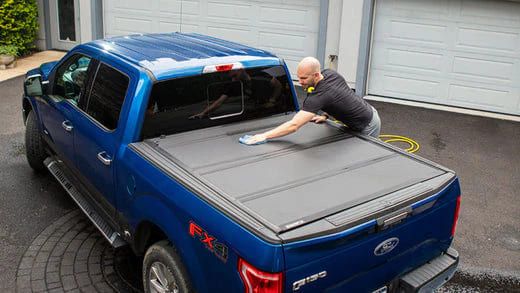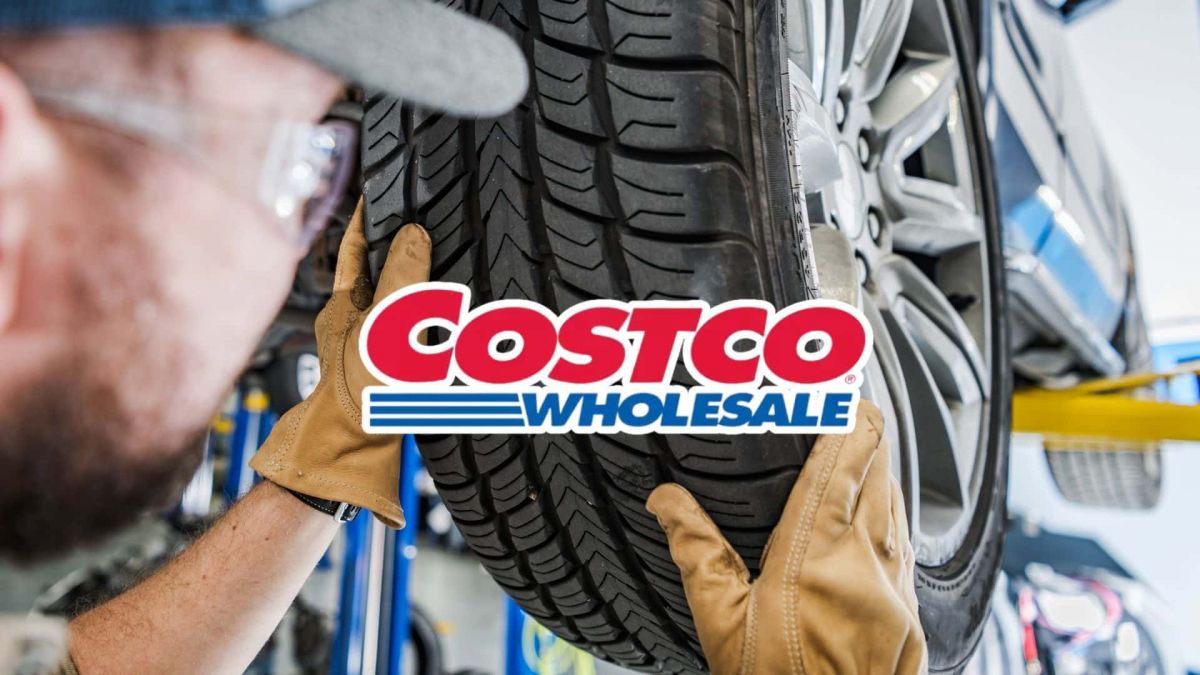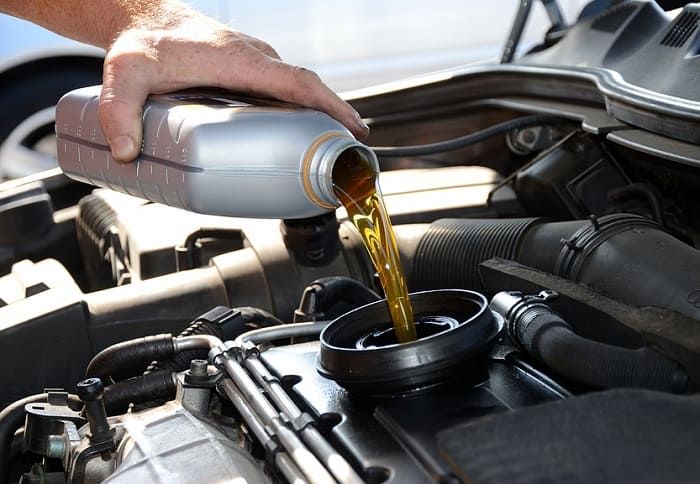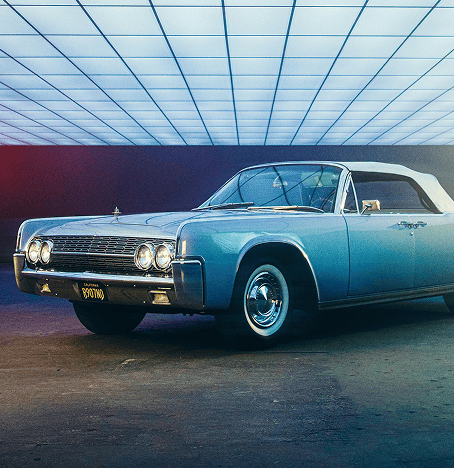Must Reads
View All


-
 Travel
TravelSteps to Get Discounted Airfares for Seniors
Regardless of age, traveling is something that many people love and for seniors, it can often open up new territory to explore, revisit their favorite place, or get the opportunity to see the world at a relaxed pace. But sometimes the cost of airfare becomes an obstacle to those travel dreams. Luckily, there are plenty of methods seniors can take advantage of to save money on airfares, so their travels can be enjoyablewhile still being easy on the wallet. Here are very useful tips toenable you save more from your next flight.1.Become a Member of AARP and Other GroupsJoining associations, for example, AARP (American Association of Retired Persons) is one of thesimplest ways for seniors to receive concessions. There are a number of travel benefits with AARP, including exclusive airfare offers made possible through partnerships with airlines.A nominal fee typically comes with membership, but the savings on flights morethan offsets the expense. Watch AARP’s travel page for flashsales and otherseniors-only offers.2.Use Airline LoyaltyProgramsMost airlines have loyalty programs that compensate frequent flying travelerswith points, miles,or cash discounts. As a senior, joining these programs and earning points from some occasional trips can help one save a good amount of money overtime. Some airlines also havespecial senior discounts, so it’s worth reviewing the fine print of your favorite carrier’s loyalty program forage-specific advantages.3.Book at the Right TimeAirfare is allabout timing. In general the best fares become available middle of the week (Tues or Weds) and several months ahead oftravel. During thesetimes, airlines often release promotional fares that seniors can capitalize on. Do not book during busy travel periods orholidays when rates can be sky high. Being flexible with your travel dates can alsounlock cheaper options.4.Use Travel Agencies, Websites that Specializein Senior DiscountsThere are plenty of travel agents and online sites which caterspecifically to offering seniors discounted prices. SeniorDiscounts.comand similar web sites have a great deal of information.Travelzoocan be excellent resources for deals. These platforms pull offers from different airlines,by doing this you can compare prices and choose the fittest option without going through many different airline pages.5.ExploreAlternativeAirlines and RoutesBudget airlinesand smaller carriers often aren't the first choice, but often offer the best value for money. Donot ignore these options if they service your destination.And, comparing other airports or layover pathscan yield huge savings as well. Occasionally a slightly lengthier trip can yielda considerably cheaper fare.6.Get a Dealand Ask for DiscountsFeel freeto contact airlines directly and ask about other possible senior discounts. Some airlines advertise their senior rates front and center, but others may have them available only on request. Be courteous and persistent; a single phone call might getyou a substantial discount that’s notmentioned in plain view.7.Utilize Companion FaresSenior travelers can find low-cost tickets by keying in specific keywords (such as oneof the benefits airline offer—companion tickets) in the airline website's search bar. If you are eligible for a companion fare, the price of your trip can effectively be cut inhalf. Look for such promotions that cango a long way in working wonder.To sum up, although airfare can discourage travel, older adults have a number of options to try to getreduced rates. With all above mentioned ways and methods such as understands joining the right organizations loyalty programs, closet brochure booking, travel-new-specialty-organizations, alternativetrips, negotiating, partnerships for two mates, you can get discounted airfares for seniors. -
 Finance
FinanceUniversal Life Insurance and Term Life Insurance
While bothterm life insurance and universal life insurance are primarily designed to provide a death benefit, they differ enormously in structure, cost, flexibility and long-term benefits. Understanding these differences is crucial in deciding on the one that is most appropriate for your funding needs and total financial targets.1.Term Life Insurance:Straightforward and Cost-EffectiveTerm life insurance provides limited coverage, usually, 10 to 30 years. A death benefit will be paid out to his or her beneficiaries if the insured passes away while the policy is still in effect. But if the policyholder dies before the end of the term, the coverage ends with no benefits paid out.This straightforward nature of term life insurance, compared with more complex options, makes it appealing to those who only need temporary insurance, when their family needs protecting, paying off a mortgage, or raising children, as needed.The main advantage of term life insurance is that it is cheap. They have relatively low premiums, and thus are an affordable option for younger people or anyone on a restrictive budget when compared to permanent life insurance products, such as universal life insurance. Another reason is that most term life insurance policies are straightforward and typically have fixed premiums and a guaranteed death benefit for the entirety of the term. This financial predictability permitspolicyholders to plan their finances without fretting over fluctuating expenses.But term life insurance is not without drawbacks. Because it doesn't grow a cash component, it is simply coverage, since there'sno investment or savings element. At the end of a term, the policyholder canrenew the policy — typically at a higher premium — or buy, a new one. But for those who want coverage for life or a financial vehicle that offers both protection and savings, universal life insurance might be a better match.2.Universal Life Insurance: Costs and LongevityOne major reason to consider universal life insurance is the flexibility it provides. Policy holders may also vary payments of premium and death benefits within certain ranges, allowing policyholders the ability to fit the policy to their evolving financial situation. For instance, if a policyholder goes through a temporary financial hardship, they might be allowed to reduce their premium payments or use the cash value to pay expenses. On the other hand, when their financial conditionbecomes better, they could raise their premiums to speed up the cash value growing faster.The cash value element also allows for growth on a tax-deferred basis, so interest earned is not taxed until taken out. Especially useful for those who are seeking retirement income or an estate to pass on to their heirs, this can be a powerful tool for long-term financial planning. Moreover, universal life insurance policies typically allow you to invest the cash value in different accounts, which can sometimes lead to better returns.But that flexibilityand those benefits also have a price. Because premiums are more expensivethan term life insurance universal life insurance, making it less accessible if you're on a budget. This policy also can be complicatedand understanding how premiums impact cash value, death benefits adds up to a comprehensive picture that often requires professional help. Moreover, if not managed correctly, the cash value can disappear, and thepolicy may lapse, leaving the insured with no coverage.Ultimately, both term life and universal life has come with their own set ofpros and cons. By taking a close look at your finances and the goals for the future, you can find the right policy that best fits your needs and offers your heirs the protection they need. A financial advisor can also be useful in navigating the intricacies of life insurance so that youcan make an informed decision. -
 Travel
TravelThe Most Scenic Road Trips in the United States
The US is a country with everything from rugged coastlines and towering mountains to vast deserts and lush forests. For the travelloversin all of us, there's no way to experience the natural beauty of this great country than jumping in your car and taking to the open highway.Here are some of the most scenic drives that will provide memorable views and excursions.1.California State Route 1 (Pacific Coast Highway)Perhaps this is the world’s most famous road trip. The Pacific Coast Highway runs along the California coast. Starting in Dana Point and finishing in Leggett, it’s a gorgeous ride featuring the Pacific Ocean, dramatic cliffs and lovely seaside towns like Monterey and Santa Barbara.The scenic views include Bixby Creek Bridge in Big Sur, Point Lobos State Natural Reserve and the Malibu beaches. With sunsets over the ocean or whales spotted from the roadside, this drive is a sensory feast.2.Blue Ridge Parkway (From Virginia to North Carolina)This road is regarded as “the favorite drive in America”. It winds its way through Appalachian Mountains, connecting the Great Smoky Mountains National Park in Carolina with the Shenandoah National Park in Virginia. This 469-mile trip is the quintessential rolling hills, bright autumn leaf color and inviting mountain vistas. Along the way, you’ll traverse hiking trails and scenic overlooks, including the truly breathtaking LinnCove Viaduct, where you can admire the area views. The parkway’s slower speed invites visitors to detour and take in nature’s beauty.3.Route 66 (from Illinois to California)Though not necessarily the most picturesque route, Route 66 is an iconic slice of American history and culture. Passing through small towns, deserts and the Cadillac Ranch in Texas and the Grand Canyon in Arizona, this historic highway stretches between Chicago and Santa Monica. Although a lot of original roadways have been replaced by the modern freeways, these roads still offer you the chance to drive across the center of America. Along the neon lights, roadside views and stops, you can start a nostalgic travel.4.Going-to-the-Sun Road (Glacier National Park,Mont.)This road, which is 50 miles long, is considered to be an industry miracle, and it is one of the most beautiful roads in Rocky Mountains. It winds across the Glacier National park, you can see Logan Pass and the Weeping Wall. But the pity is that the road is only open seasonally, generally between late June through October (depending on weather), so plan accordingly to see this breathtaking drive.5.Peninsular Corridor Highway (Florida Keys)The 113 miles of road known as the Overseas Highway, which links mainland Florida to popular vacation destination Key West, while always zips over the turquoise waters of the Atlantic Ocean and Gulf of Mexico. That route correct 42 bridges, including the famous Seven Mile Bridge, and offers stunning views of both ocean — seawater never freezes — and the Keys’ tropical foliage. On the way, you can pull over to snorkel or fish, or to feast on fresh seafood at waterside restaurants. It concludes at Key West, a lively island town famous for its sunsets and relaxed vibe.6.Utah’s Scenic Byway 12 (Bryce Canyon to Capitol Reef)Utah’s Scenic Byway 12 is a drive that desert landscape lovers will not want to miss. This 124-mile drive runs through some of the state’s most breathtaking national parks and monuments, including Bryce Canyon, Grand Staircase-Escalante and Capitol Reef. The drive includes red rock formations, soaring cliffs and wide-angle views that feel almost otherworldly. The Hogback, a narrow ridge with steep drop-offs on each side, also delivers thrilling views of the surrounding canyons.All over the United States, scenic drives offer different lenses through which to appreciate this country’s changing landscapes. Whether you’re cruising the scenic Pacific Coast Highway, driving mountain passes or visiting desert wonders, these road trips promise unforgettable memories and spectacular sights. So get your bags, get in the car, and make the journey just as memorable as where you end up. -
 Automotive
AutomotiveWhy We Need to Change Oil for Our Cars
Oil changes is averycommon andimportant part of vehicle maintenance. It probably seems like a no-brainer, and one of those things you can do yourself, but changing the oil in your motorcar iscrucial topreserving its life, performance and efficiency. Although essential, so many individuals overlook this standard process, but be careful as ignoring it has serious effects on your car.Here’s why you need to change your car’s oil.1.ComponentLubricationEngineoil is mainly used to lubricate the engine mounted moving parts.When your car’s engine is running, thousands of metal componentsare whirring at high speeds. Without proper lubrication, those parts would grind against each other, generating friction andheat.And, over time, this friction can create quite a bit of wearthatdecreases the engine’sefficiency, and may lead toirrevocabledamage. Well-lubricated parts are also vital to keeping everything in the engine harmonizing; lubricants minimize the friction between these surfaces and prolong the life ofthe engine.2.Heat RegulationWhile running, enginesmake a lot of heat. The oil helps soak up and disperse this heat, so the engine won't run hot. Over time, though, the oil breaks down and the temperature regulation becomes ineffective. Dirty, degraded oil can contributeto higher engine temperature, which could eventually lead to overheatingor even engine failure. Keeping up with routineoil changes ensures that theoil remains effective at performing its cooling role, keeping theengine temperature where it should be.3.Removal of ContaminantsOil grabs dirt, debris, andother contaminates as it flows through the engine. Combustion byproducts, dust or metal particles dueto engine wear can contribute to these impurities. These contaminants build up in the oil over time, transforming it into a thick, sludgy gunk. “Dirty Oil”can't appropriately lubricate theengine anymore, and those contaminants cause the engine parts to abradeand get damaged. By changing the oil, these harmful particles are removed, keeping theengine clean and protected.4.Improved Fuel EfficiencyClean oil when the oil is dirty because it generates friction and the engine does not work efficiently. A well-running engine takes less power to run, meaning improved fuel economy. Conversely, dirty oil, namely old oil, causes friction, which makes its respective engine work harder, in turn burning more gas. Regular oil changes will keep your oil clean for optimal fuel efficiency, saving you money in the parking lot.5.Prevention of Engine SludgeEngine sludge is a thick, sticky substance that builds up when oil breaks down and combines with other materials. Sludgecan block oil passages, preventing properlubrication and internalengine damage. Sludge buildup, in extreme cases, could leadto total engine failure. By replacing old,dirty oil before it turns into sludge, regular oil changes help prevent sludge from forming in the engine.6.Extended Engine LifeA good engine can go forhundreds of thousands of miles, but not if you never change the oil. Routine oil changes mitigate the wear and tear on engine components, prevent overheating and facilitatea clean engine. Regularmaintenance in this case will spare you expensive repair services or overall engine replacement in the future.7.Cost SavingsSome view an oil change as an unnecessary cost, however, in fact, changing it periodically is a practical and effectiveway of maintaining your vehicle. An oil change is a small price when compared to the costs of a blown engine dueto negligence. Regular oil changes mean less wear and tear on your car and lesschance of expensive repairs down the road.In short, it isa simplebut significant maintenance task that has agreat impact on the performance and longevity of your car.And ensuring the motor runs smoothly and efficiently, fresh oil lubricatesengine elements and controls heat and expels contaminants.Regularoil change intervals will prolong the life of your car, improve its fuel mileage, and keep you from having to spend more money on repairs. So the next time your car is due for an oil change, don’t put it off — your engine will be grateful.
Popular Articles
-
 Travel
TravelReasons Why Costco Tires Are Your Optimum Selections
If youare looking for tires, thenCostco Tires is one of the best places for the drivers. Costcotire shopping has become a one-stop shop for quality, value, and customer service; no surprise there. Below area few great reasons you should choose CostcoTires when buying your next set of tires.1.Competitive Pricing and ValueThe lower price is the most outstanding vantage for you to buy Costco Tires, and except for that, Costco Tires are of high quality as well.In addition, Costco frequentlyruns promotional combos, such as deals onsets of four tiresor savings on installation services. These deals are downright attractive to shoppers on a budget, but don’t think it sells you short in quality.2.Premium Tire BrandsIt has cooperative relationships with some famous tire companies, such as Michelin and Goodyear. All these companies are very prestigious in tire making field. Therefore, you can feel easy to buy Costco Tires.3.CompleteInstallation ServicesPurchasingtires fromCostco doesn't only mean tires, you are also getting professional installation services. Eachof Costco's tire centers has qualified technicians on staff who guarantee that your tireswill be installed the right way, safely. Includes tiremounting, balancing and replacement of valve stems.4.Free Lifetime ServicesAnother area where Costco Tires stands out is its lifetime services, which are provided free of charge for thetires you buy there. These services include tire rotations,flat repairs and inflation checks. Well, Costco makes it easyand free, for its members, anyway, to stay on top of tire maintenance to keep your tires going strong (and your gas tank full) for thousands of extra miles.5.Warranty and Road Hazard ProtectionCostco tires warrantyis not lessthan that.And this coverage protects you against sudden damage such as punctures and blowouts, and it can saveyou plenty on repairs or replacements.Thisprotection brings peace of mind as a result, and if you regularly drive in adverse conditions, that peace of mind is priceless.6.Easy forCostco MembersNo one likes going to the store for tires, so for everyone whoalready has Costco membership, the convenience of buying tires at Costco cannot be beaten. Online, in-storeshopping and seamless installation. On top of that, you'll be able to use Costco's other services, like their food court or grocery shopping, during yourtire installation wait time. With a membership-based modelthey guarantee exclusive perks and a person touch.7.Sustainable and Eco-FriendlyAlternativesCostco's tire offerings follow suit, withthe warehouse chain being committed to sustainability. Most of the tires sold at Costco are made to be fuel-efficient, which means your car will get as many miles per gallon as possible,cutting your carbon output. Costco alsoproperly disposes of old tires and recycles them to ensure the least amount of environmental impact.8.Exceptional Customer ServiceCostco Tires are not only good at their qualities, but also excels in customer supports. You will be amazed by its after-sale service. If you have any problems with the Costco Tires that you have bought, just connect the customer support, and they will help you with quick speed and high quality.For anyone in search of quality tires at an excellent price, Costco Tires is the ideal choice. Costco is full of all the premium brands, all the full-service options, as well as freeoil services, and fantastic customer support to keep your vehicle running smooth and safe. So if you find yourself behind the wheel more than you'd like, or you just like a little peace of mind on the road, CostcoTirescan be a trusted partner in crime. So when youneed new tires next, give Costco a try — it's an option that pays off in both value and performance. -
 Travel
TravelThings to Pay Attention to When Buying a Used Pickup Truck
Used pickup trucks are what most of us will be looking at, it provides uswith a good alternative, a tough, flexible and impressive value for money. But buying a used pickup truck is not an easy process, and traps are everywhere. Hereare key things to keep in mind when shopping for a used full-size pickup truck.1.Set a BudgetStart your search with a budget in mind. If you buy a car, include the cost of purchase, taxes, registrationfees, insurance, potential repairs, etc. Oravoiding overspending by sticking to a budget tohelp you narrow down your options.2.Check Vehicle HistoryWhen purchasing a used pickup truck, a vehicle historyreport is needed. Services such as Carfax or AutoCheck can offer information about accidents, title status, mileage and maintenance history. Stay away from trucks with severe accident histories, flood damage or salvage titles; they can create major repair problems later.3.Inspect MileageMileage is not the only measure of a truck’s condition, but it’s a keyone. Low miles typically mean less wear, but high mileage isn't necessarily a dealbreaker if the truck was well maintained. Considermileage balanced with overall condition.4.Do a Walk Around of the Outside and InsideExamine the truck’s exterior for any rust, dents, scratchesor evidence of repainting, which could suggest previous harm. Inspect the bed for damage, since this is a major part of a pickup truck. Step inside and check for worn seats, cracked dashboards or inoperative controls. A clean interior is often indicative of how well the previous owner took care of the car.5.Test Drive the TruckDefinitely take a test driveto get a feel for how the truck drives.Pay attention to how to starts, accelerates and stops. Above all, you need to pay attention to the abnormal noise, such as rattling or grinding, which means the problems. What’s more, you also need to check the transmission, suspension and four-wheel drive areas.6.Check the Engine andUnderbodyOpen the hood and check the engine for leaks, corrosion orfraying belts. Check the oil and coolant levels and look for signsof bad maintenance. If you can, get under it to look for any rust, damage or worn out parts like shocks and suspension parts that a mechanic can check.7.Confirm Towingand Payload SpecsIf you have a plan to use the truck for hauling goods, one thing must do is to check its towing and payload abilities. Do remember to check whether this truck can burden the weight you want it to tow or not. If you really care the towing ability, make sure it includes a working hitch and wiring harness.8.Review Maintenance RecordsRequest maintenance documentation to ensure the truck was serviced regularly.A well-maintained truck includes routine oil change, tire rotations, etc. Not keeping records might mean neglect and could lead to issues down the road.9.Negotiate the PriceThere is usually room to negotiate onused pickup trucks. If you do decide to negotiate, use your research on the truck’s market value, condition and any needed repairs to agree on a fair price. Beready to walk away if the seller won’t agree to your offer.10.Get aPre-Purchase InspectionEven if the truck looks great, it’s worth it to hire a mechanic for a pre-purchase inspection. An expert can spot problems that might behidden, and will not show up in an informal inspection or drive.11.Check OwnershipCostsLastly, you should think about the overallownership costs of the car. Research its fuel economy, insurance rates, parts availability.Do remember that some models are cheaper but more expensive to maintain at the same time. Therefore, you need to consider these aspects.By referring all these aspects, you can find a suitable used pickup truck of high quality to meet your standards. Make the time, do the research, be bold enough to ask questions. A great used pickup truck can provide lots of reliability and fun foryears to come.





 Visit Website
Visit Website













